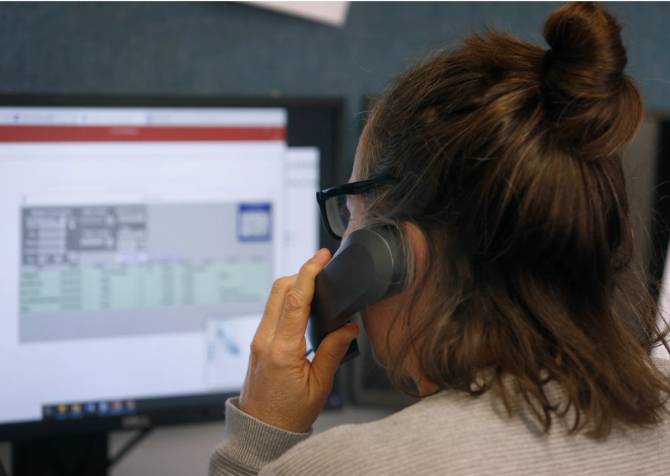988 is the new number to call for a mental health emergency
988 - National Suicide Prevention Lifeline

The National Suicide Prevention Lifeline is getting a three-digit makeover that has been in the works for over two years. Individuals experiencing a mental health crisis can now call or text 988—a much shorter, more memorable option than the 11 digits used previously—to access mental health professionals.
National Suicide Prevention Lifeline
Call 1-800-273-TALK (8255); En Español 1-888-628-9454
The Lifeline is a free, confidential crisis hotline that is available to everyone 24 hours a day, seven days a week. The Lifeline connects callers to the nearest crisis center in the Lifeline national network. These centers provide crisis counseling and mental health referrals. People who are deaf, hard of hearing, or have hearing loss can contact the Lifeline via TTY at 1-800-799-4889.
Crisis Text Line
Text “HELLO” to 741741
The Crisis Text hotline is available 24 hours a day, seven days a week throughout the U.S. The Crisis Text Line serves anyone, in any type of crisis, connecting them with a crisis counselor who can provide support and information.
Veterans Crisis Line
Call 1-800-273-TALK (8255) and press 1 or text to 838255
The Veterans Crisis Line is a free, confidential resource that connects veterans 24 hours a day, seven days a week with a trained responder. The service is available to all veterans, even if they are not registered with the VA or enrolled in VA healthcare. People who are deaf, hard of hearing, or have hearing loss can call 1-800-799-4889.
Disaster Distress Helpline
Call 1-800-985-5990 or text “TalkWithUs” to 66746
The disaster distress helpline provides immediate crisis counseling for people who are experiencing emotional distress related to any natural or human-caused disaster. The helpline is free, multilingual, confidential, and available 24 hours a day, seven days a week.
Contact social media outlets directly if you are concerned about a friend’s social media updates or dial 911 in an emergency.
View the NIMH 5 action steps for helping someone in emotional pain infographic to see how you can help those in distress.
Find a Health Care Provider or Treatment
Treatment for mental illnesses usually consists of therapy, medication, or a combination of the two. Treatment can be given in person or through a phone or computer (telehealth). It can sometimes be difficult to know where to start when looking for mental health care, but there are many ways to find a provider who will meet your needs.
Primary Care Provider: Your primary care practitioner can be an important resource, providing initial mental health screenings and referrals to mental health specialists. If you have an appointment with your primary care provider, consider bringing up your mental health concerns and asking for help.
Federal Resources: Some federal agencies offer resources for identifying health care providers and help in finding low-cost health services. These include:
National Agencies and Advocacy and Professional Organizations: Advocacy and professional organizations can be a good source of information when looking for a mental health provider. They often have information on finding a mental health professional on their website, and some have practitioner locators on their websites. Examples include but are not limited to:
State and County Agencies: The website of your state or county government may have information about health services in your area. You may be able to find this information by visiting their websites and searching for the health services department.
Insurance Companies: If you have health insurance, a representative of your insurance company will know which local providers are covered by your insurance plan. The websites of many health insurance companies have searchable databases that allow you to find a participating practitioner in your area.
University, College, or Medical Schools: Your local college, university, or medical school may offer treatment options. To find these, try searching on the website of local university health centers for their psychiatry, psychology, counseling, or social work departments.
Help for Service Members and Their Families: Current and former service members may face different mental health issues than the general public. For resources for both service members and veterans, please visit the MentalHealth.gov page Help for Service Members and Their Families page or the U.S. Department of Veteran Affairs’ mental health page.
In an initiative dubbed “Stay Home, Stay Mindful,” the subscription service has begun offering free meditation, sleep, and movement exercises to Michiganders. “When we developed the content in response to the pandemic, we were really trying to understand the current situation most people are finding themselves in while quarantined at home,” says Sarah Romotsky, Headspace’s director of healthcare partnerships. “It’s been specially curated to help support the governor’s ‘Stay Home, Stay Safe’ efforts.”
Most of Headspace’s meditations guide users to inhale through the nose and exhale through the mouth while being mindful of their bodies. During the “Stressed,” “Alone Time,” and “Panicking” meditations, users identify their thoughts and feelings as they come, rather than avoiding them, through the practice of mindful “noting.” In the “Feeling Overwhelmed” meditation, users perform a visualization, which Romotsky defines as imagining something happening within your body or mind to help you remain present.
These meditations and other resources can be found at headspace.com/mi.